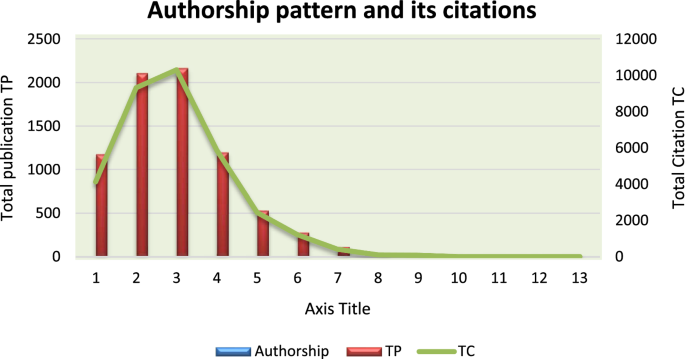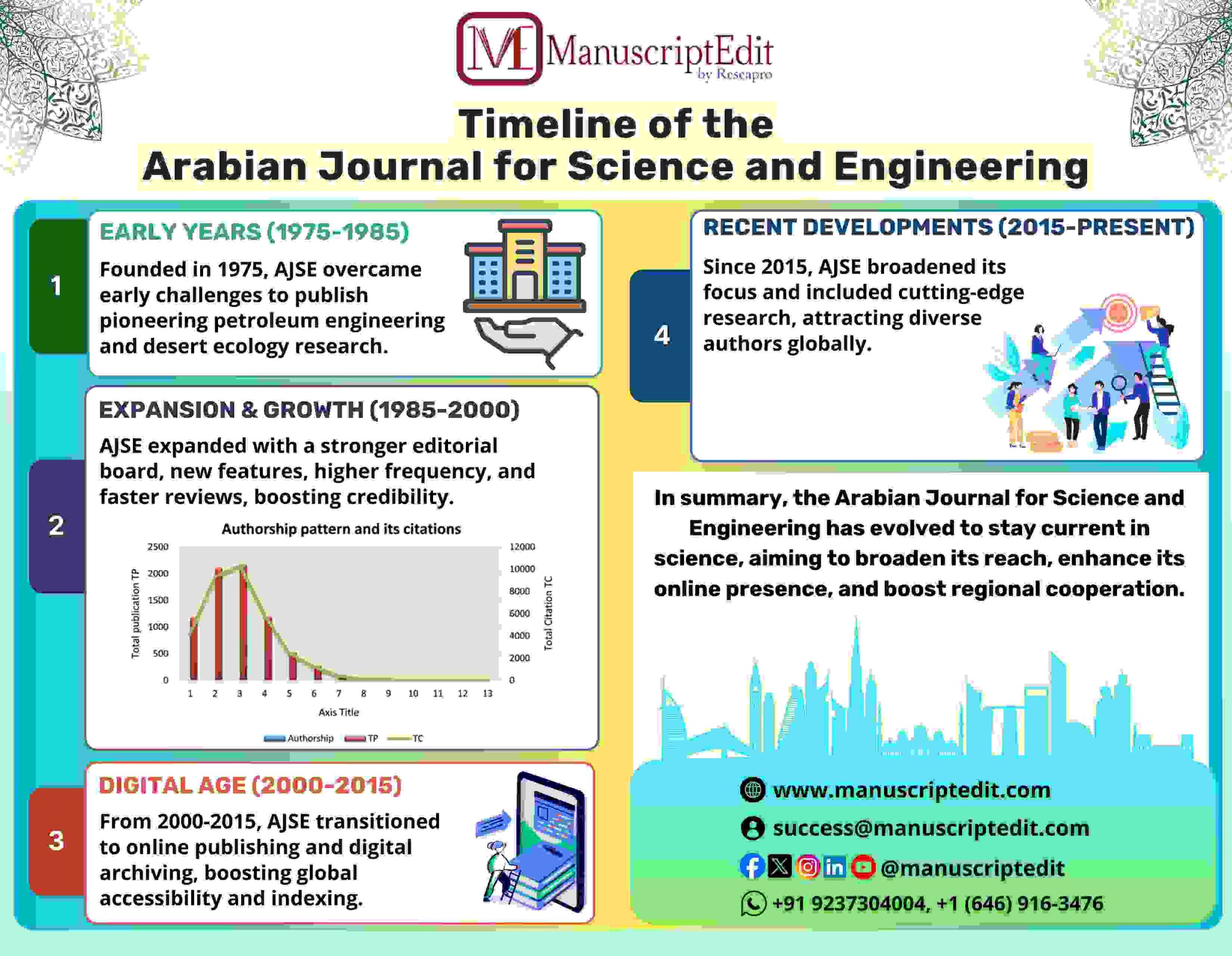 King Fahd University peer-reviewed process Arabian Journal for Science and Engineering (AJSE), essential to advancing scientific publishing. The AJSE’s rigorous peer-reviewed process advances knowledge and innovation by ensuring high-quality research in various subjects.
King Fahd University peer-reviewed process Arabian Journal for Science and Engineering (AJSE), essential to advancing scientific publishing. The AJSE’s rigorous peer-reviewed process advances knowledge and innovation by ensuring high-quality research in various subjects.
Who Is the Publisher of the Arabian Journal for Science and Engineering?
Springer and the prestigious King Fahd University of Petroleum & Minerals (KFUPM) jointly published the AJSE through a collaborative effort. This hybrid open-access journal, with an impact factor of 2.9 as of 2022, is a testament to their shared commitment to advancing research in science and engineering fields.
 Early Years (1975-1985)
Early Years (1975-1985)
The 1975 founding of the AJSE aimed to advance scientific research in the Arab world. The journal initially had difficulties, but well-known articles and writers contributed to its legitimacy. In its early years, AJSE published pioneering research in petroleum engineering and desert ecology.
Expansion and Growth (1985-2000)
A solid editorial board and peer-review procedure were established, additional sections and features were added, and the journal’s frequency and circulation increased as it expanded. Review times and acceptance rates significantly decreased, enhancing AJSE’s standing as a credible scientific publication.

Digital Age (2000-2015)
The AJSE embraced the digital age (2000-2015) by transitioning to online publishing and digital archiving, enhancing global accessibility and indexing.
Manuscript submission and review processes were streamlined, reducing review time. AJSE’s impact factor and acceptance rate improved, attracting high-quality research and solidifying its reputation as a premier scientific journal.
Recent Developments (2015-Present)
The AJSE has changed dramatically since 2015. The journal was given a makeover and republished with a broader focus, including cutting-edge research from additional areas.
AJSE has drawn authors and viewpoints from various backgrounds by emphasizing regional and global collaboration.
As one of the top scientific journals in the Arab world, AJSE now has an impact factor of 3.2, an average review time of 4 weeks, and a competitive acceptance rate of 25%.
Is Arabian Journal for Science and Engineering Q1?
With an impact factor of 2.807, the Arabian Journal for Science and Engineering is a Q1 journal in the top 25% of journals in its field. Published by Springer Berlin, it is an interdisciplinary publication that publishes research in a range of science and engineering topics.
Is the Arabian Journal of Geosciences (Scopus) Indexed?
Yes, Scopus has the Arabian Journal of Geosciences indexed. Nevertheless, Scopus has stopped carrying it as of 2021. Astrophysics Data System (ADS), BFI List, Baidu, CLOCKSS, CNKI, CNPIEC, Chemical Abstracts Service (CAS), and other databases also have it indexed.
Impact and Legacy
The AJSE has significantly influenced scientific research in the Arab world by publishing innovative studies and encouraging creativity. Authors and readers have praised AJSE for its rigor and relevancy, and it has won various prizes and accolades.
Testimonials emphasize AJSE’s contribution to the advancement of science, the assistance of researchers, and the development of regional competence.
Conclusion
In summary, AJSE has changed dramatically since its founding to keep up with the rapidly evolving field of science. With an eye towards the future, AJSE intends to broaden its reach, improve its online presence, and promote regional cooperation.
References
● https://journalsearches.com/journal.php?title=arabian%20journal%20for%20science%20and%20engineering#google_vignette
● https://www.researchbite.com/impact/details/13951#google_vignette
● https://www.scimagojr.com/journalsearch.php?q=13951&tip=sid&clean=0
●https://www.researchgate.net/publication/357553944_Forty_Five_Years_of_the_Arabian_Journal_for_Science_and_Engineering_AJSE_A_Bibliometric_Analysis



